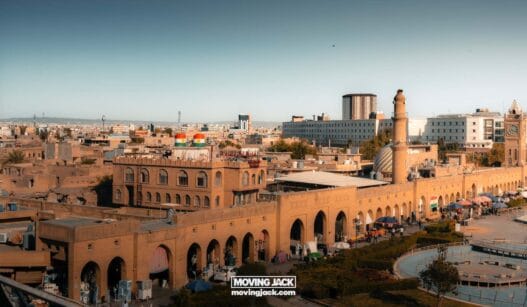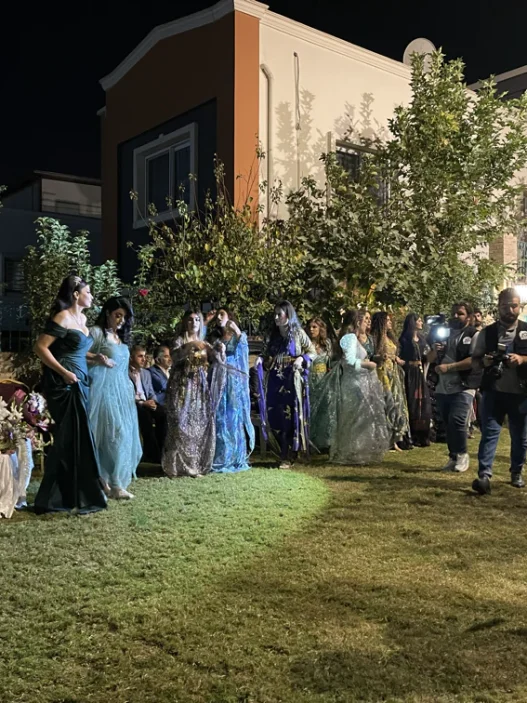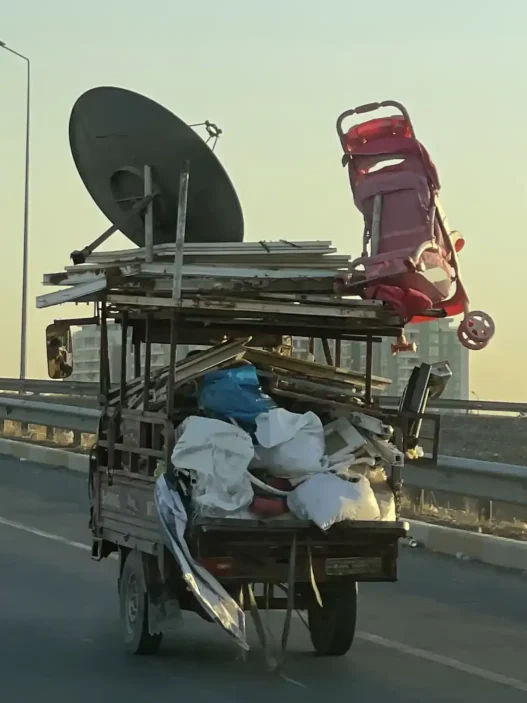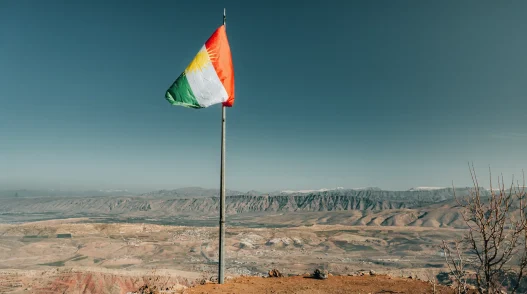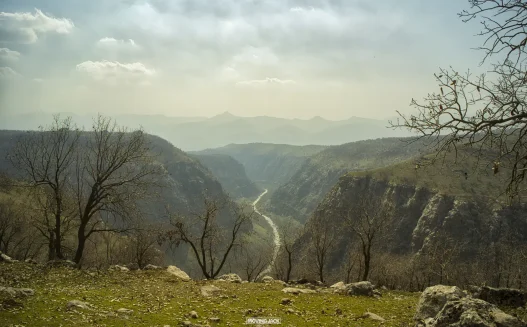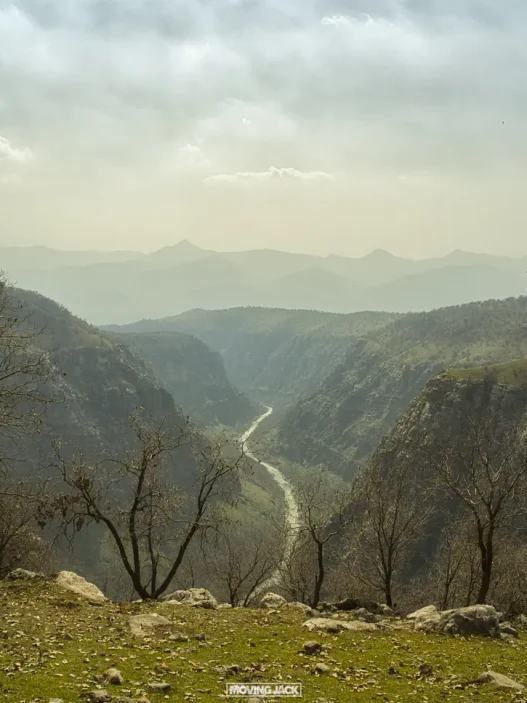During my time in Erbil, I embarked on several trips into the mountains. One of those trips became extra special when I encountered real nomads. Their lifestyle, steeped in tradition and resilience, was both fascinating and enlightening. After my adventures in the mountains, I returned to Erbil, where I rested at one of the best hotels in Erbil, reflecting on my incredible experiences. The juxtaposition of modernity and ancient heritage in the city made my journey all the more memorable.
Two nomadic families lived together in tents at the foot of a mountain. To survive, they had a flock of sheep, goats, and a few horses and relocated from season to season.
This remote spot was in northern Iraq, also known as Iraqi Kurdistan, near a small town called Choman. The landscape was more than incredible: epic mountains, open green spaces, and fresh air (unlike in the city!).
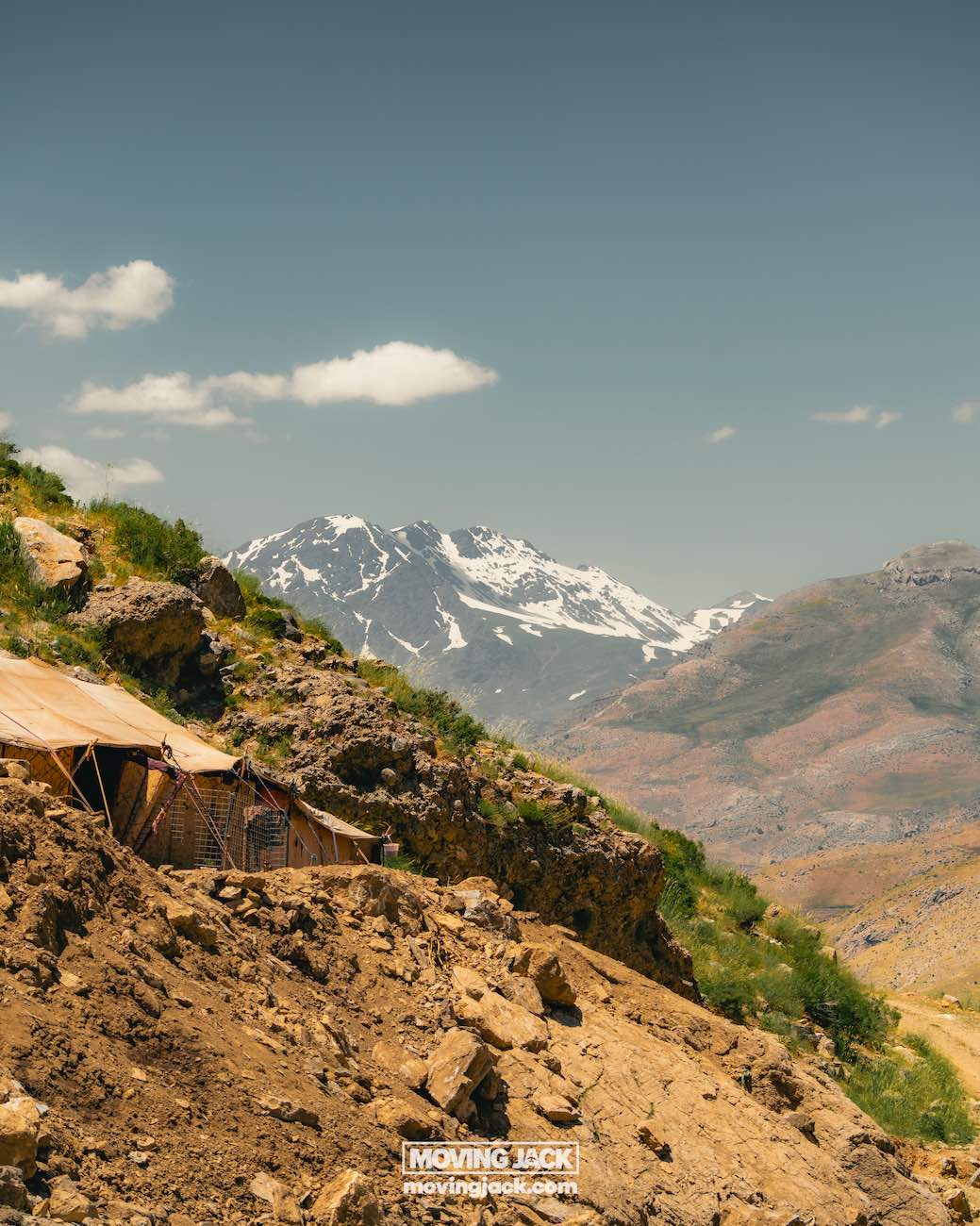
But despite its beauty, it wasn’t the safest area to wander. Being close to the Iranian border meant political tensions, and travelers were often advised to be cautious.
Yet, for these families, this was simply home. They weren’t just passing through; this was their way of life, and it had been for who knows how long.

A Glimpse Into Their Way of Life
I learned quite a few interesting things about this special encounter, as our local tour guide happened to know the nomad families.
It was mid-June, and while it was almost 50 degrees in the city, in the mountains, the weather was pleasant and mild. The tour guide told me that here in the mountains, it is spring now. It is a much different season than in the city. You could clearly see that spring was in full swing, with flowers everywhere, green fields, and birds flying around.
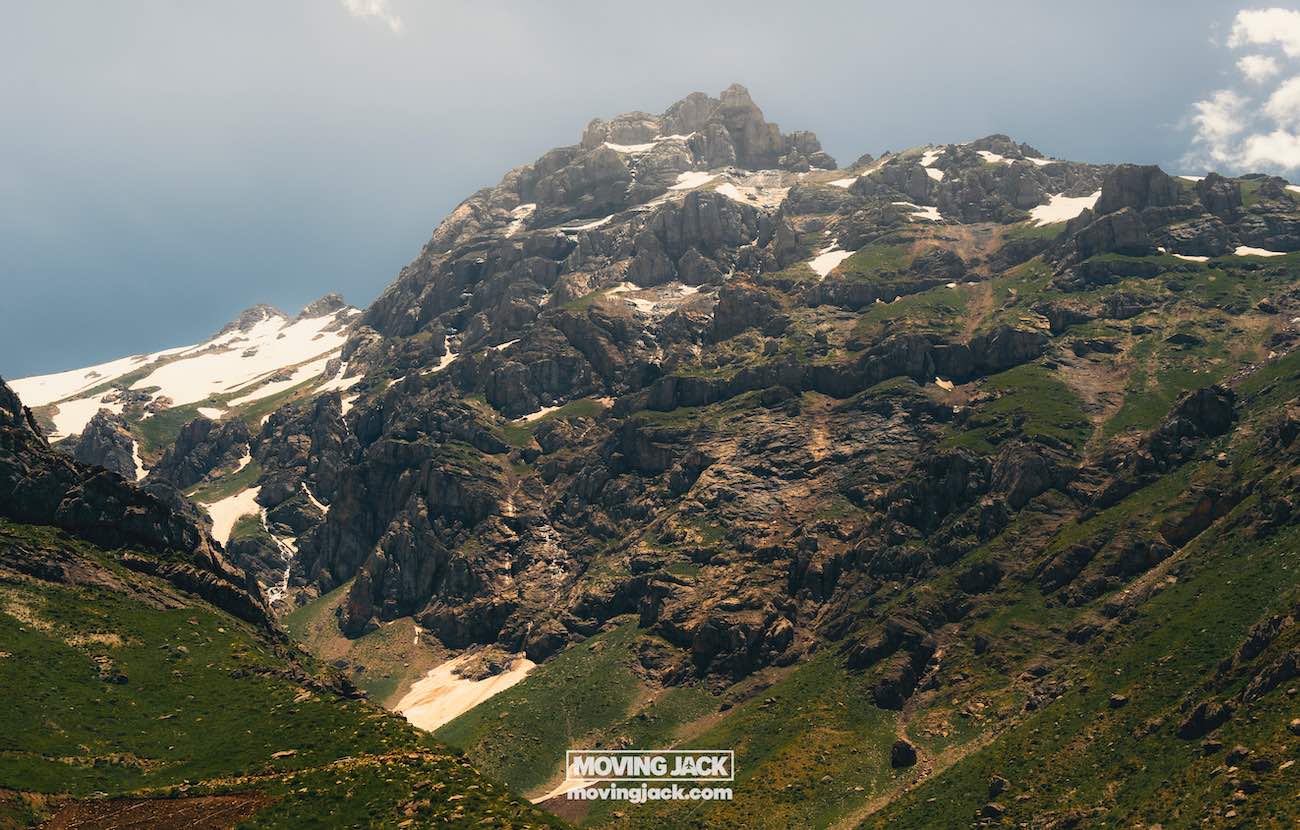

Moreover, the water of the mountain snow was starting to melt, turning into a giant waterfall all the way from the top to the bottom of the mountain.
At first, the snow looked like it was lying on the mountain. We had been walking on it for quite some time. Later, we realized that the melting water was flowing beneath the snow. It was like a giant bridge made of snow that could collapse at any time!

The melting water was one of the reasons why the nomads had set up camp in this place. During this time of the year, they used the melting water to wash their amenities, clothes, and other gear and equipment. You can see the water is quite brownish, but that’s because of the sand. To be able to get drinking water, they had to walk all the way to the top of the mountain where the stream starts. I actually tried the water myself at the top, and it was super clear and fresh water.


Waking to the top and back took about 3 hours, and since there was no light whatsoever, the nomads had to plan their trip to avoid getting stuck in the dark.
I was told that this is also one of the reasons why they live with two families together; they need all the extra hands for everything that has to be done that day. The boys embark on a trip to get drinking water from the top of the mountain while others wash their clothes and dishes.

Large families are common in Iraq, and having eight siblings is not an exception. It’s a way to survive, for protection, and to make a living.

When I looked closely at one of the tents I noticed it said “UN” on the roof, the logo of United Nations. I did some research but I couldn’t find any programs of the UN in that region. It struck me that they must have been using these tents for a very long time.

Lessons from the Nomadic Lifestyle
Seeing the peaceful intertwining of regular everyday life and the nomadic family lifestyle was truly special.
It was another eye-opener, one of many in Iraq, that gave me another perspective on life. Living so deeply in touch with nature, they rely on the seasons, the melting water, the meat from their flock of sheep, get eggs from the chickens, and move it all from one location to another just to survive. It’s hard to imagine this life, but this encounter gave me some incredible insights.




And it wasn’t just the way of living; it was also the peacefulness that you could clearly see and feel. We, as a group of unknown outsiders, were welcomed and greeted in a friendly way. While the rest of the world was moving fast, these families were focused on the essentials like shelter, food, and the well-being of their animals. It was such a unique glimpse into a lifestyle that most of us can only imagine.

I must admit taking photos felt a bit awkward as if I didn’t want to expose their location or way of living like we met a tribe in the Amazon forest hiding from society! But our tour guide, seen here below, knew the nomadic families and said taking photos was absolutely fine.

Top of the Mountain
After hiking for about two hours, we finally reached a place close to the top of the mountain. This was the spot where a waterfall came to life, providing fresh, melting water, which was the lifeline for the nomads living nearby. The water was pure and drinkable, a welcome treat after the long, steep climb!
Honestly, the hike turned out to be much steeper than I expected, so I wasn’t really paying much attention to what was going on behind me. But when we reached the waterfall and I turned around, the incredible view completely blew me away.




The Future of Nomadism
What was also fascinating was the huge contrast between the nomadic way of life and the “normal world” just a short distance away. Not far from where the nomads lived, life was going on like anywhere else. There was a small town center in Choman with restaurants, bars, and local supermarkets.

Adding to this contrast, a group of young locals rode their motorbikes through the mountains, eventually stopping by to say hello. It highlighted how close and yet very different these two worlds were.


Seeing this made me reflect on the nomads’ way of life. It wasn’t something they had simply chosen to do; instead, it was a way of living passed down, probably through many generations. For them, moving with the seasons, relying on their animals, and relying on their environment was just life, as it had always been.


How to get there?
Choman is not an easy place to reach. My advice is to find a tour guide that is experienced and trustworthy. I had a great experience with Kurdistan Outdoor. You can reach them on their WhatsApp.
The best way to go to Iraqi Kurdistan is to fly to Erbil International Airport. Book a hotel in the city for a few days and make a day-trip to Choman if there is a tour. Consider exploring local markets and trying traditional Kurdish cuisine to immerse yourself fully in the culture. Additionally, for those who are new to the area, seeking out resources or guides specifically about visiting Erbil for beginners can enhance your experience and help you navigate the city with ease. This will allow you to appreciate the rich history and hospitality of the Kurdish people while making lasting memories.
Besides Choman there are so many other beautiful areas in Iraqi Kurdistan ; places you would never expect in Iraq or the Middle East! Visitors can immerse themselves in the breathtaking landscapes, from lush green mountains to serene lakes. Additionally, region offers a glimpse into Kurdish cultural customs and traditions, showcasing vibrant festivals, traditional music, and local cuisine that reflect the rich heritage of the people. Exploring these areas not only reveals natural beauty but also highlights the deep-rooted cultural identity of the Kurdish community. One of the most vibrant experiences in this region is the Newroz festival celebrations in Iraq, which marks the Kurdish New Year and symbolizes renewal and hope. During this time, communities come together to celebrate with colorful traditions, including dancing, singing, and feasting on traditional dishes. These festivities not only enhance the cultural richness of the area but also foster a sense of unity and pride among the Kurdish people.




